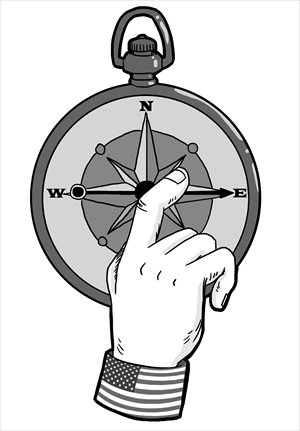US in position to strangle China's maritime lifelines

As the geopolitical situation evolves, the enforcement and the range of the US suppression and encirclement of China has been changing.
Nevertheless, the US has never stopped such efforts since the establishment of the People's Republic of China in 1949.
In recent years, the US has increasingly pushed its "return to Asia" policy. The strategic nature of this policy still remains as suppressing and encircling China, but the prime goal is now maritime encirclement.
When it comes to China's surrounding maritime environment in the past three years, problems have grown more complex and international.
Recently, some nations, in collaboration with the US and nearby big powers, have tried their best to upset China and create disputes in the South China Sea.
Even so, the US is unsatisfied and has involved itself closely into the region.
In May and June, during the standoff between the Philippines and China over Huangyan Island, the US sent off nuclear-powered attack submarine, getting in and out of Subic Bay.
In addition, the US stated that it would send four littoral combat ships to Singapore, due to the vital geographic location of the Strait of Malacca, which is the strategic passage of the South China Sea and the key to both the Indian and Pacific Oceans.
The US has never languished in the East China Sea and the Yellow Sea either. With Japan's efforts in the Diaoyu Islands, the US just needs to continue tightening up and holding on the first island chain.
In order to set up a doubly-locked passage, the US has placed 24 MV-22 Ospreys in the Marine Corps Air Station Futenma, directing against Chinese submarines.
In the Yellow Sea, the US held joint military exercises with South Korea in March and another set of exercises with South Korea and Japan in June. The latter exercises, which were aimed at strengthening cooperation among the US, South Korea and Japan, included the striking appearance of the George Washington nuclear-powered aircraft carrier.
China's strategic direction at sea has become a major concern of the US. The US has many advantages over China when conducting suppression and encirclement at sea.
The US not only has many large and medium-size warships, but can also sail to other nations' offshore waters to carry out military deterrence freely and even conduct long-range precision strikes from sea to land.
If the US notices the threat from opponents' offshore or inshore forces and weapons, the US vessels are able to swiftly retreat to secure waters, getting twofold results with half the effort. Comparatively, it's much easier to strike the bases and airfields on land.
Another reason for the US to put more emphasis on the sea is that more than 90 percent of China's foreign trade volume is conducted through sea passages, and the value of naval trade makes up two-thirds of China's GDP.
A large proportion of critical strategic materials, including crude oils, iron ores and natural rubber, is transported through the sea.
In fact, China has become an export-oriented economy, highly depending on sea lanes and passages. The US knows this very clearly and believes that if necessary, it could smother or slow down the rapid development of Chinese economy. We should keep a clear mind and be highly alert on this point.
Of course, the US has never given up suppressing and encircling China by land by basing troops and backing democratic revolutions in Central Asia. But nations in Central Asia have widespread mutual geopolitical and economic interests with China.
In this sense, to encircle China by land is much more difficult than by sea.
The author is a senior researcher at the Chinese Naval Research Institute. opinion@globaltimes.com.cn
'Return to Asia' aimed at tightening alliance network